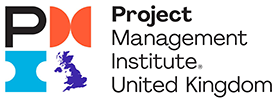APM’s annual conference, held on 6th June 2024, was a vibrant and well-attended event. The theme, “Navigating Tomorrow: Future Skills for Project Managers,” highlighted the importance of equipping project managers with the tools to overcome obstacles in major project delivery.
This workshop facilitated by Merv Wyeth and Hugo Minney was designed to demonstrate how benefits management effectively engages stakeholders, particularly those typically resistant to change, such as the operations side of an organisation. The session was interactive, utilising Mentimeter to gain valuable insights from the audience, who generously shared their knowledge and perspectives. To view the interactive survey results and insights shared by participants, visit our Mentimeter Results.
Diverse Industries, Common Challenges
Participants hailed from a wide array of sectors including Local Government, Aerospace Defence, Water, Tech Marketing, Nuclear Decommissioning, and Education. Despite the varied backgrounds, a common thread emerged: the universal relevance of benefits management. This diversity underscores the broad applicability of benefits management principles, emphasising the need for tailored approaches that cater to specific industry challenges.
“Ongoing scope creep often results in a project being deemed to have failed. Poor stakeholder management and communication can result in active resistance to change, which prevents benefits realisation.” – APM Conference Participant
Transformation and Service Delivery at the Forefront
A significant portion of the attendees are involved in transformation projects, particularly in government and commercial sectors. These projects, characterised by their complexity and scope, benefit immensely from robust benefits management practices. By focusing on these types of projects, the workshop provided valuable tools and methodologies to help project managers navigate the intricacies of transformation and service delivery, ensuring that benefits are realised and value is maximised.
Strategic Leadership and Governance
Only 3% of our 150-strong workshop audience were project sponsors while 25% were in PMO roles. The majority, 55%, were in project leadership positions. Effective benefits management goes beyond tracking metrics; it aligns work and resource investments with organisational objectives. The workshop provided leaders with frameworks and strategies to integrate benefits management into their governance processes, ensuring alignment with organisational goals and objectives.
Bridging the Gap: Planning and Value Creation
A key discussion point was the disconnect between project planning and value creation. While planning is often detailed, it frequently fails to translate into tangible benefits. To address this, the workshop introduced several approaches.
- Using benefits to quantify the achievement of strategic objectives through a portfolio approach was highlighted.
- Initiating or changing programmes, projects, tasks, and other activities based on the variance between forecasted and planned realisation of objectives was another method discussed.
- Additionally, incorporating benefits management at all stages of project and programme delivery, including inception, business case development, delivery, and post-handover, ensures that value creation is integral to the project lifecycle, not an afterthought.
Practical Scenarios and Real-World Applications
The workshop’s interactive nature allowed participants to share practical scenarios and real-world examples of obstacles to project success. These case studies, drawn from 174 responses, highlighted common themes such as the lack of clarity and alignment on benefits upfront, inadequate planning and adaptation throughout the project lifecycle, and weak engagement and change management.
Benefits Management as an “Overcoming Obstacles” Tool
The discussion then focused on how benefits management can address these obstacles. Clarity arises from understanding the organisation’s strategic objectives and how each project contributes to these goals. Projects should be initiated based on need, not just because they seem like a good idea, and their relevance should be regularly reviewed.
Regular reviews should compare changing circumstances and their impact on project delivery. The Benefits Dependency Network (BDN) is a powerful tool for identifying which project activities need detailed review, ensuring focus on relevant activities. Stronger engagement results when employees understand their contribution to the organisation’s goals. Involving them in defining benefits and success measures fosters engagement and support, ensuring effective change.
Benefits Management as a Lighthouse
Throughout the seminar, the analogy of a lighthouse guiding ships safely to shore was frequently used to describe benefits management. Just as a lighthouse provides direction and helps avoid hazards, effective benefits management illuminates the path to project success, guiding teams around potential obstacles. This metaphor resonated deeply with participants, reinforcing the importance of having a clear vision and ongoing measurement of benefits to navigate the complexities of projects.
What Did We Learn?
Participants applied their learning by answering how they would use benefits and value management to improve project success. The key themes from 79 responses emphasised the importance of early and ongoing stakeholder engagement. Communicating benefits effectively to gain buy-in and understanding was noted as critical. Integrating benefits metrics into communications boosts engagement, and ensuring everyone is aligned from the start keeps the intended benefits as the guiding “North Star.”
Aligning project scope and decisions with benefits helps maintain focus. Using benefits mapping to empower stakeholder-engaged decisions, enabling data-led portfolio management and prioritisation, and assessing change requests against benefits were all seen as vital. Defining clear, measurable benefit statements and success criteria, regularly measuring and monitoring progress towards benefits, and updating benefit profiles to keep them current were also highlighted.
In summary, benefits management acts like a lighthouse: it guides you to your destination and keeps you off the rocks.
Authors: Hugo Minney, Sam Leung, Merv Wyeth


